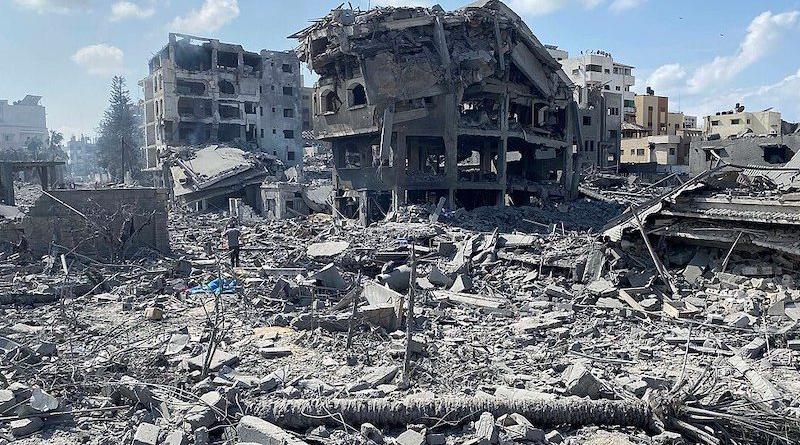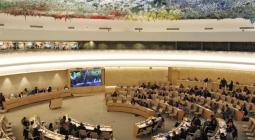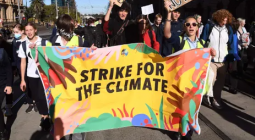Calls for Gaza Ceasefire Reflect Nexus of Human Rights, Climate Vulnerability

With mounting calls for an immediate ceasefire in war-ravaged Gaza, news analysis is beginning to point to the brutal connection in many countries between armed strife and the impacts of climate change.
“People living on the front lines of conflict often find themselves on the front lines of the climate crisis as well,” France 24 reported late last month. “Many of the countries most vulnerable to climate change—including Sudan, Afghanistan, and Yemen—are also experiencing instability that leaves them ill-equipped to adapt to its challenges. And some are warning that the Gaza Strip will soon also be tied up in a Gordian knot where the climate crisis meets armed conflict.”
Last week, Climate Action Network-Canada (CAN-Rac) issued a statement on the “tragic and escalating violence in Palestine and Israel” that included an eight-point call to action, including an immediate and unconditional ceasefire, immediate release of all hostages, and safe access to humanitarian aid for Gaza.
It warned that “Canada and other G7 countries’ response to the conflict reinforces the growing divide and distrust between Global North and Global South,” risking “devastating direct human consequences” as well as “severe setbacks” to COP 28 climate negotiations in Dubai, “which the people on the front lines of these overlapping crises cannot afford.”
In its earlier reporting, France 24 noted that 14 of the 25 countries considered most vulnerable to climate change are currently embroiled in armed violence.
“While there is not a direct correlation between climate change and conflict, countries at war are less able to cope with the effects of climate change because their ability to adapt is undermined by internal divisions or ongoing violence,” the TV network states. “Climate change can also inflame existing tensions over access to diminishing necessities.”
All of which makes Gaza “more vulnerable than ever” as the devastating Israeli invasion that followed Hamas’ brutal attacks and hostage-taking October 7 continues to unfold.
“One exacerbates the other,” international development expert Yvonne Su, an assistant professor at York University, told France 24, referring to the broader nexus between conflict and climate change. “If a place is climate vulnerable, people could be fighting over resources.”
The news story cites a 2020 report by the International Committee of the Red Cross (ICRC) that pointed to the far-reaching devastation that can result from the ripple effects of conflict and climate change. It cites instability in the Sahel and Lake Chad regions and conflict in the Central African Republic and Somalia as prime examples.
In Gaza, there’s nowhere to run, from the war or from the impacts of the climate crisis.
“International organizations had been warning of the dire lack of infrastructure and sanitation in the Gaza Strip long before the war between Israel and Hamas began,” France 24 writes. “Home to 2.2 million people, the strip is only 41 kilometres long and 10 kilometres wide, roughly twice the size of Washington, DC, making it one of the world’s most densely populated areas. Inhabitants systematically face shortages of food, water, electricity, and health services.”
But if that weren’t more than enough, “the strip also faces rising temperatures, declining precipitation, rising sea levels, and more frequent extreme weather events, all of which are brought on by climate change,” the network says. “In January 2022, intense floods in Gaza damaged hundreds of buildings and put entire drainage systems out of commission, forcing people out of their homes. Were an extreme weather event to hit the area now, when access to basic needs is impossibly restricted, its local population would not have the means to cope.”
“The primary driver of vulnerability in Gaza is conflict. And growing climate risks are exacerbating people’s vulnerability,” the ICRC’s head of policy, Catherine-Lune Grayson, told France 24. “Long-lasting occupation and blockade mean people in Gaza have more limited means than in other environments. One adaptation strategy is to move, for example, in search or more fertile land or water. That is not an option for people in Gaza.”





